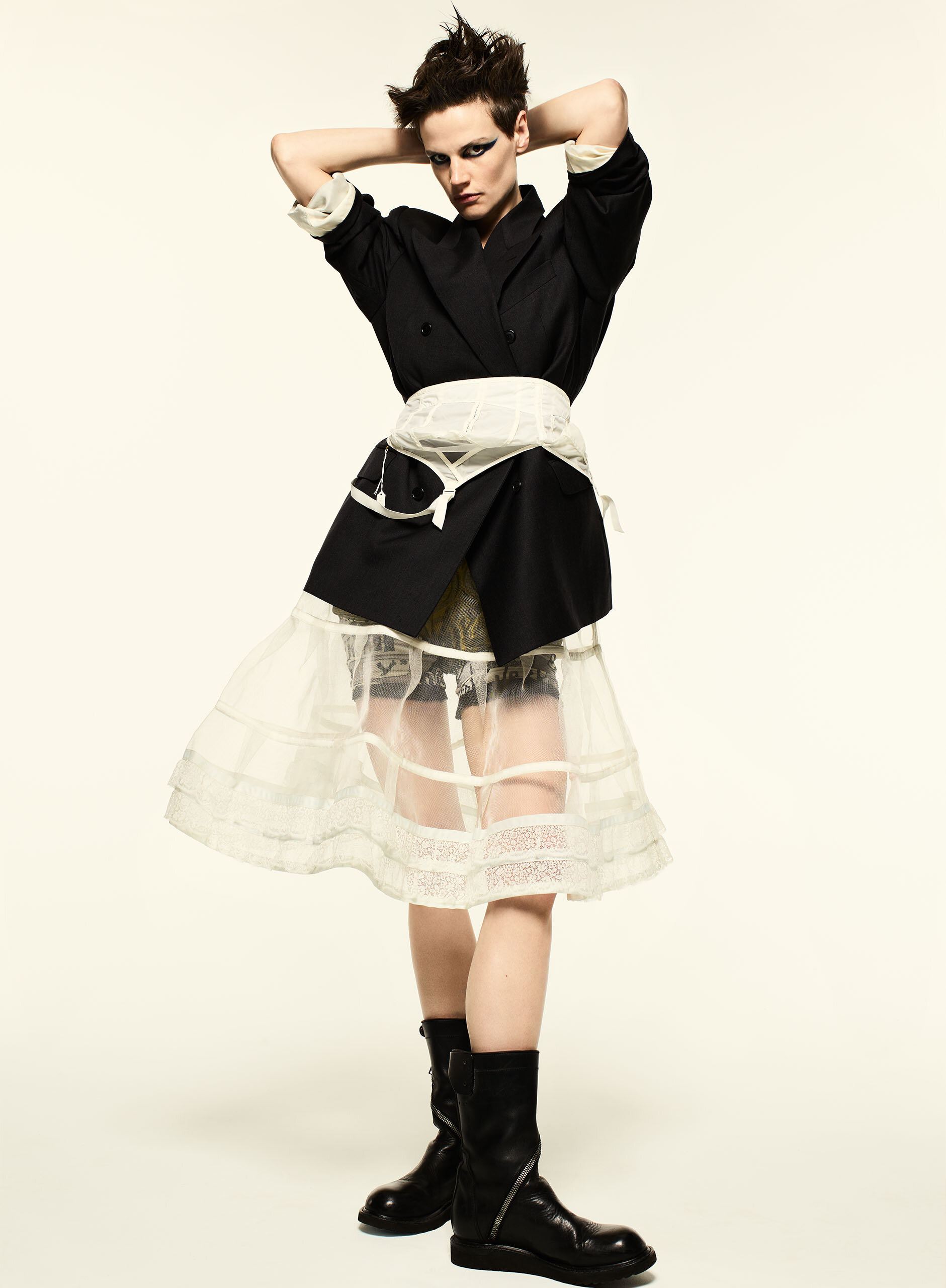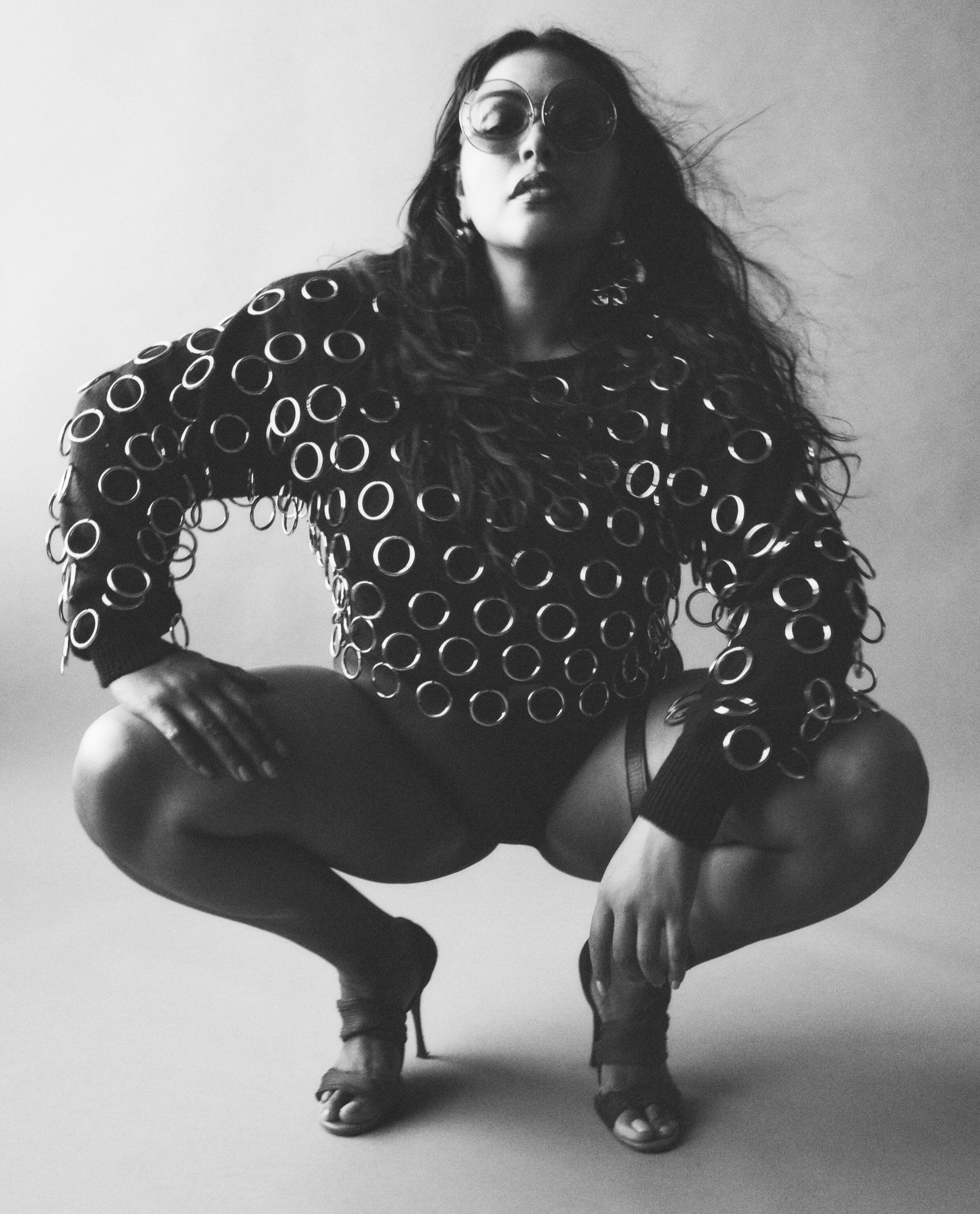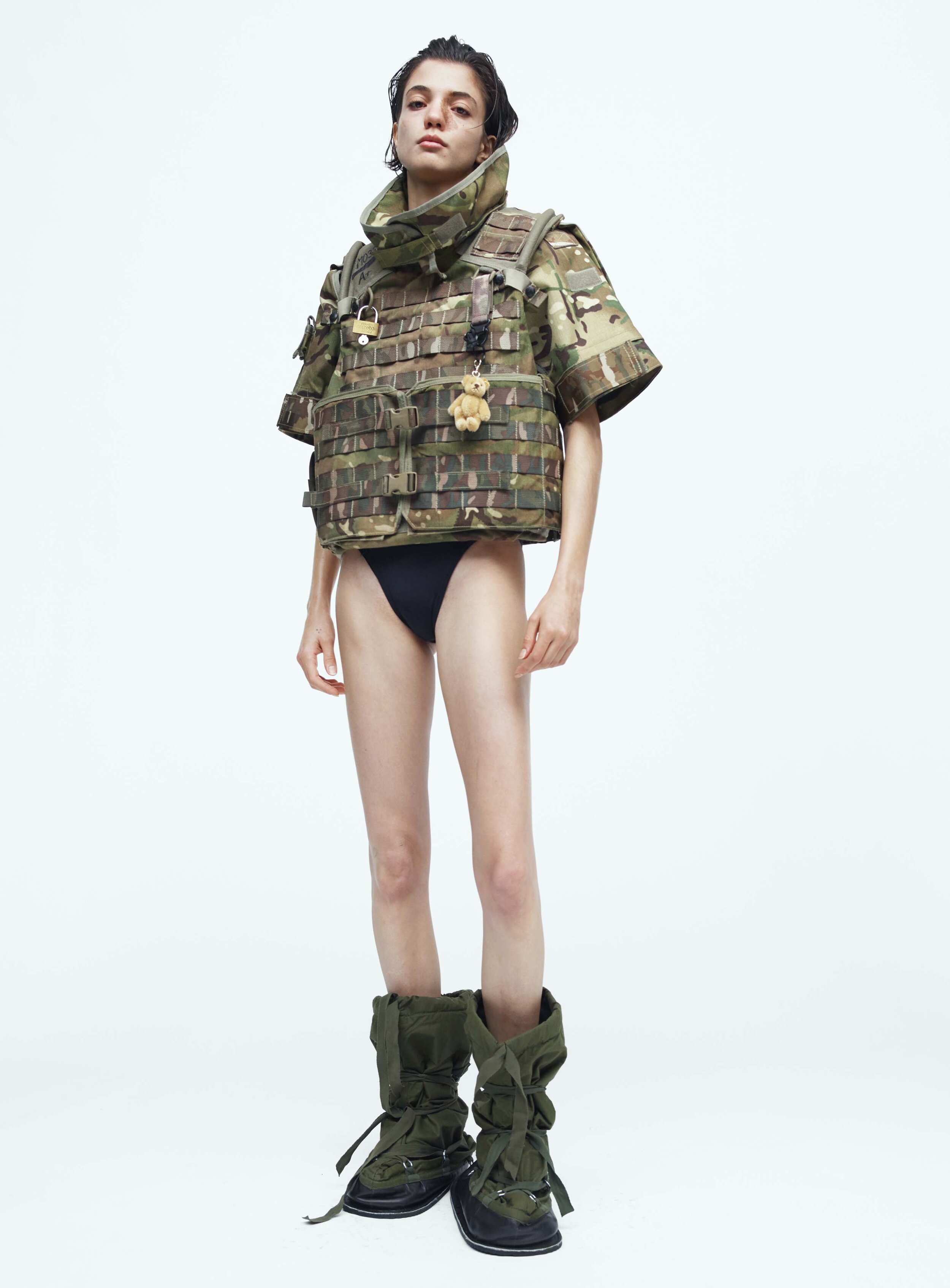Changemaker: Brynn Heminway, stylist and editor
Developed by New York-based creative director Brynn Heminway, Display Copy is a new integrated fashion platform designed to showcase and celebrate the beauties of upcycled and vintage fashion. The mission is clear: to disrupt how fashion is perceived and consumed by forefronting the stunning possibilities of what’s already out there.
It succeeds, via luxury-forward editorials by industry leaders. The print version of the debut edition offers four different covers shot by photographers Mark Borthwick, Daniel Jackson, Amy Troost and Andy Harrington and featuring Paloma Elsesser, Saski a De Brauw, Hélène Fillières and Noah Carlos. Meanwhile, the online platform features shoppable, continually updated, editorials, via partners such as Garmentory, Desert Vintage, Funkanova, Early Halloween, This Era Archive, eBay, and more.
“Display Copy is a new fashion magazine that doesn’t feature a single new fashion item,” says Heminway. “This isn’t about promoting new products, it’s about loving what we already have and seeking out novelty and style in what already exists. We promote reuse by showcasing the thrifted, the found, the recycled, and the upcycled. It’s not inherently about discarding consumerism, it’s about celebrating longevity over trend and style over fashion. Display Copy’s message is one of resourcefulness,collaboration, and celebration. It’s about cherishing each of the items we invite into our lives.”
Inspired by the environmental and waste crises, Display Copy is a brave retort against the system of overproduction and waste currently dominating the fashion industry. The fashion industry produces more than 150 billion garments each year. Approximately 80% of these garments sell and the remaining 20% are burned or sent to the landfill. Of the 80% that sell, the average consumer wears each garment an average of 7 times before discarding. As a result, more than 82 billion kilos of clothing are burned or sent to the landfill every year.
Brynn’s beautiful new baby aims to encourage and foster a deep love of fashion and our planet by presenting an inclusive high-fashion, luxury-forward perspective on personal style. Taking note of Virgil Abloh’s prophecy that “buying boxfresh” is coming to an end, Display Copy creates looks from Army Surplus to vintage couture that invite readers to experiment, create and express themselves responsibly and sustainably
Editorials in the first edition mix a nineteenth century corset with 1980s Stephen Sprouse biker shorts on Saskia de Brauw. A still life story by artist Katerina Jebb combed the archives of Louis Vuitton, Dior, and Chanel, surfacing Wallis Simpson’s velvet shoes and Dora Maar’s handbag. A collaboration with Depop darling Noah Carlos, featuring only thrifted items, reminds readers that you don’t need to spend a fortune to flex your personal style. Model Paloma Elsesser looks electric in head-to-toe vintage, proving everyone wrong who says vintage isn’t for the curvy girl.
Over her 18+ year career Brynn has collaborated with a wide range of luxury brands from around the world to develop 50+ creative campaigns in print, digital, and film mediums for clients including Jil Sander, Louis Vuitton, Dior, Versace, Gap, Vogue Latin America, i-D, and Double amongst others. Here, she speaks about the new platform.
Bel: Where does the resurgence of interest in vintage come from?
Brynn: On the one side, it's coming from the Gen Z audience who are growing up facing the climate crisis. They’re inheriting it, and it affects them in a much greater way. From a philosophical point of view, they're committed to decisions that care for the earth. From an aesthetic point of view, this is their creative expression to find things outside the traditional fashion system and make it their own.
For older generations - Gen X, millennials and beyond - [there’s the understanding] we have to do something about fast fashion. It’s ruining the planet. Vintage has always felt inaccessible and sort of difficult. We’ve valued convenience so much that it wasn’t really a go-to option. Now it's becoming more important.
Bel: When you talked about Gen Z, buying vintage almost felt like an act of rebellion. But is this just another trend?
Brynn: It's a deep rooted culture change. At least, I hope it is I. I hope vintage becomes the new luxury and thrift becomes the new streetwear. I hope that it really becomes the new norm. For the sake of the planet, it has to be that way.
Bel: Do people understand that?
Brynn: I was asking our sustainability editor the other day for good sources of information. She’d suggested we do a post on circular fashion. And I said, ‘But isn't that kind of household information at this point’. She said, absolutely not. Gen Z have Greta Thunberg but I think, within the fashion community, misinformation is a big problem. There are initiatives trying to make a body of real facts that we can count because it doesn’t exist yet. So a lot of information is shared peer-to-peer or via the odd news article that just happens to spark something.
Bel: Half the population know they need to do something and the other half is buying more stuff ...
Brynn: And even people you really respect - who are educated, reading the news every day, multiple publications - have asked me: ‘Why start a magazine about vintage?’ I give them boilerplate information - like we produce 100 and 50 billion items of clothing a year; 20% of those never sell; the 80% that do are only won an average of seven times before they’re discarded. People can't believe it. It's just not common knowledge.
Bel: What do you want to achieve with Display Copy?
Brynn: I've been in the fashion industry for 20 years. I love it, I will always love it. The way we dress and the way we express ourselves is a powerful tool of communication. At the same time, I really started to struggle with my role in the industry. I had a major crisis of soul. I was watching River Blue and it's heartbreaking. And throughout that entire movie, every time they flashed to a Gap window, there was my campaign in the window.
I’ve been part of the problem. But fashion has provided me with a community, a sense of place for creative expression, a living, all of these things. So, I was really struggling with how to change my relationship to this industry. It came out of a really kind of dark place.
I'd always wanted to start a magazine. At their best, magazines provide inspiration and information that changes culture. And I don't know a magazine off the top of my head that inspires in that way any more - except what Alastair McKimm is doing with iD magazine. So Display Copy really came out of my personal struggle to reconcile my values with our industry. I can't change the world but I can change my conversation with my community.
My peers were very supportive but, at first, they didn't necessarily get it. They would say, ‘we're onboard’ but it wasn't “A hah! This is brilliant!” Now, it makes sense. On every set, we weren't having to shoot advertisers head to toe, not having to follow any of the typical fashion rules. And I had so many contributors say to me ‘this is why I fell in love with fashion and you've made me fall in love with it again’. The fashion industry is influential and, if we're shifting the conversation from the inside, I think it can trickle out.
Bel: Fashion has this ability to affect culture in a very wider sense because it intersects with so many areas of modern life. And once you release yourself from the hegemony of trends, it's become a means of real creativity. Each individual vintage piece has a narrative that then appeals to someone - and then they're just passing stories down. It's really very very a different connection with clothing.
Bryan: That's exactly it. Once you realise that a piece has a story, it becomes much more special. And you engage with it in a different way. You want to care for it differently. You want to make it last and you feel differently when you wear it. It's not just to put on a persona. It's actually a part of you and part of your narrative, and your story.
PICTURE CAPTIONS: Amy Troost, “Saskia Unbound” featuring Saskia De Brauw; Daniel Jackson, “The Body Electric” featuring Paloma Elsesser; John Guerro, “At Attention” featuring Daira da Silva Pinto; John Guerro, “At Attention” featuring Amal Tobi. All images courtesy of Display Copy



